Click below to watch the video:
Who built the original Ka’ba? Where was it? When was it destroyed and rebuilt? Can we find the original Ka’ba?
Transcript
Video #5 This is a general transcript of a Dan Gibson video in the series: Archeology and Islam.
Hello, and welcome to another video in the series Archeology and Islam. My name is Dan Gibson.
Now some people have responded to my theory that Petra is the original holy city of Islam, by protesting that the name Petra does not occur in the Qur’an. And they are right. But was the city of Petra always known as Petra? That name was given to the city by the Greeks and Romans. What about before that? What name did the surrounding nations use when they referred to the city of Petra?
Now the oldest name for Petra and for the Petra mountains is Seir
An Egyptian record mentions “Seir, in the land of “Shasu” which is generally thought to be the mountains around Petra in Jordan. Also, in the temple of Amen-hotep III it talks about war against the people of Mount “Seir.” (Moran, 1992) Which we know is Petra.
From the Bible we learn that Mount Seir was named this for Seir the Horite, whose offspring had at one time inhabited the area. (Genesis 14:6, 36:20)
Later the tribe of Esau (that is the Edomites) battled against the Horites and the Zamzumites and destroyed them and made their homes in these same mountains, the mountains of Seir. (Deuteronomy 2:4-22)
Much later Mount Seir is also given as the location where the remnant “of the Amalekites escaped to.” (Genesis 32:3; 33:14-16; 36:8; Joshua 24:4)
Now this is important because the Amalekites were later annihilated and references are that they were in Petra. That is where they had escaped to. (I Chronicles 4:42-43)
Now al-Ṭabarī and others tell us, (Al Ṭabarī Vol 2:73, Mas’udi 1841:74-76) they associate the Amalekites with the city of Mecca. But as long as we understand “Mecca” to be down is Saudi in central Saudi Arabia, then it is highly unlikely the Amalekites would be that far. But we can actually place the Amalekites in Petra, and that, as we have seen in our studies is the holy city of Islam.
Now in the Autumn issue, 2017 of the Journal of Semitic Studies there is an excellent article by Mehdy Shaddel, who demonstrates that the original name of Petra was al-Raqiim, and that’s the name of a very early king who lived in that area. Shaddel traces this through: - a funerary inscription in Petra, plus, rabbinic writings, a letter attributed to Cyril of Jerusalem, some Syriac texts, a homily by Eusebius of Caesarea, The Book of the Laws of Countries by Bar-day-san and writings of Josephus, and also some Biblical texts. All of this is proof that Raqim is Petra.
And in the Qur’an the name Raqim also appears as God gives evidence that Raqim is one of the great miracles. Look at Sura 18:9 “Do you reckon the companions of the cave and al-Raqim to be among our wondrous signs?” Now, the location of the city of Raqim (or Petra as we know it today) is in a crevice between two mountains, filled with majestic carvings that must have seemed to the listeners of the Qur’an to have indeed been a sign from God. However, many commentators on the Qur’an, all down through history, who didn’t know anything about Petra and its association with al-Raqiim; they thought, maybe that is the name of the dog, the dog that the seven sleepers had. These seven sleepers they fell asleep for several hundred years and when they woke up it was called: This is a miracle. And also Raqiim is called: This is a miracle. And so you can read about that in Sheddel’s article and find out what it says.
Now, what about Hebrew language? In Hebrew Petra was called Selah which means “The Rock.”
In the Hebrew Bible the term Selah is applied to a number of large prominent rocks, such as the Rock of Etam - Selah Eytam in Judges 15 in the Bible. It is a specific rock that everyone knew. (Judges 15:8, 15:11)
The Rock of Rimmon or Selah Remmowan in Judges 20. And this was a place that people knew, and they would call it ‘the rock.’ (Judges 20:45-47)
The Rock of Mahlekoth you find that in 1 Samuel. It is a place called ‘The Rock’. (1 Samuel 23:28)
The Hebrew Scriptures also mention a ROCK (Selah) in the south, but no other name is attached to it. Everyone s seemed to know where it was. It was The Rock. It was a place called Selah.
Now, in the Greek language, THE ROCK = Petra. That is the word we know today. It is from the Greek. And it refers to a mass of connected rock,” which is distinct from Pétros which is “a detached rock or a boulder.” So it means a big rock.
Pliny the Elder, (Natural History, Pliny, Book 6:32) who is writing about 70 AD he mentions THE ROCK and he called it Petra, and it is the capital of the Nabataeans and the center of their caravan trade.
Now there is an ancient Roman road map which dates back to the third century. It marks Petra as an important site on the Roman road known as Via Traiana Nova which is named after one of the Roman Emperors.
Later under Constantine the city of Petra became the seat of a bishopric; there was a church there. And in the fifth century Petra was the administrative center of the Byzantine province of Palaestina-Tertia. So there was a state that it was a capital of.
There has been some discussion that maybe the name: THE ROCK was also applied to a much earlier account of the Greek Antigonis who attacks this large rock. But that is about 50 km away, near the Edomite capital of Busheira. So that is not here, that is a separate rock. So that is the one that Antigonis attacked, also known as The Rock. (Gibson, 2003, pg 36)
So it can be confusing, as there are two Rocks. One Sela and the other one Petra. So the Roman maps talks about Petrea, that’s plural, the two rocks. And so Antingonus attacks one rock, you will see it on the map. And Petra becomes the second Rock.
And so that is why we have the state called Petrea, which is the two great Rocks. Now, the city of Petra also had another Roman name. The Roman Hadrian, who visited Petra in 130 AD on his grand tour of the Roman Empire, and he gave the city his name after him: Petra Hadriane. And so that is the name that Roman records used.
Now in 1993 archeologists were excavating a Byzantine church in Petra, when they discovered some burned up scrolls. And they used various techniques and laid them out and discovered that they could read them. These are burnt papyri.
And they discovered that these are the records of Theodoros son of Obo-dianos and his family who lived in Petra 537 to 593 AD. This would be during the period just before the prophet Muhammad was born, up until he was in his twenties. (Papyri: 537-593 AD, Muhammad: 570-632 AD) These records contain economic and legal documents about this family living in Petra. But a Christian family not a pagan family.
From the papyri, we discover that Petra had the name: Imperial Colony Anton-iana. Now that is an interesting name. It was an imperial colony.
And it is interesting to note that honorific titles were used by these Byzantines. So they used things like: ‘the most honorable’ (eudokimotatos) You see it on your screen., ‘the most religious’ (theosebestatos), ‘or the most brilliant’ (lamprotatos), or the ‘most pious’ (eulabestatos) and so forth. They loved to use these kinds of names.
And in early Muslim writings we find honorific titles, are being used in Islam also are very similar. al-Madina al-Munawara, , we have Karbala’ al-Muqaddasa, al-Qur’an al-Karim and so forth. Just in the same way they are using these kinds of things.
Now the Emperor Ela-gabalus, he bestowed a name on it, he called Petra the ‘Mother of Colonies’. (Elagabalus (218 - 222 AD) This was an honorific. We see it as early as the third century AD and it also occurs in the sixth-century in the Petra papyri: *The Mother of All Colonie*s.
Eventually this term became associated with the English term we have today: metropolis, but if you understand, it originally meant the mother of colonies. Now, a very similar term appears in the Qur’an, used in reference to Mecca. In Sura 6:92 AND 42:5 Mecca is called: the Mother of all Settlements or *Umm al-Qu*ra.
It’s a common for modern translators to carelessly say “The Mother of All Cities” but the Qur’an specifically uses the term for settlements, qura and not cities. That would have been mudin. Notice that the Greek does not use the word cities either, and so the Greek and the Arabic agree here in the use of the term, and both of them call the Holy City: The Mother of all Settlements.
The Petra Papyri also revealed another term used for the city of Petra: A unique term; not used in the Roman Empire. And it means: Blessed or Noble.
Getting an exact meaning of this word is difficult, as around this time the meaning of the word was changing. It originally meant noble, or even blessed but at this time, the Christian world began to use the term meaning “holy.” And so the Petra papyri they use this term and they apply it to churches, and other big buildings even tombs and civic buildings. They are called noble. Hence, the exact meaning of this word at this time remains uncertain.
Neither ‘holy’ nor ‘noble’ nor ‘blessed’ would apply to a city. It’s a strange name, but that’s the name that Petra had, a very unique name and the People of Petra were very proud of their name, the Holy and the Blessed or the Nobel city.
This resonates with the terms that the early Muslims applied to the city of Mecca: such as Makkah al-Mukarramah and Becca al-Mubaraka and so forth.
Now, the city of Petra was a divided city. From the Petra Papyri, some people have assumed that Petra was Christianized… It was a Christian city. After all, the papyri speak mostly of Christians. Other Byzantine writings speak of churches, a cathedral, and even a bishop, The Bishop was sent off to the Council of Alexandria in 231 AD. However, it must be remembered that the Petra Papyri were found in a church. And they were the legal records of only one family. They are not history. They don’t have Births, and marriages, and deaths. They have buying and selling and legal arguments over ownership of land, and so forth.
They are not historical records of what is happening on a wider scale, even in the city. And so we need to turn to archeological and try to discover what is the setting for these ancient papyri?
And from a survey of buildings in Petra, it becomes obvious that the Christians occupied only a small sector of the city. All of the Christian churches, the Christian buildings and Christian tombs are located in one area of the city. The rest of the city appears to have maintained its polytheist pagan identity.
What is fascinating is that while the Christian sector of Petra was mostly in the north east of the city, the polytheists occupied the center of the city, and most of the Islamic locations are located in the south of the city, except for the Ka’ba which is on the main street right beside some of the great pagan temples.
Now the Polytheists, Muslim and Christian would have all used the grand processional way that comes down through the siq and through the colonnaded city street and then they would go to their respective places of worship. Due to the religious nature of the city, the name Blessed Mother of Settlements/Colonies seems to apply perfectly in this situation. Petra was the blessed or holy city.
It is not unusual for a city to be divided into various ethnic or religious quarters, where the events in one quarter are barely noticed in the other quarter of the city.
And so we find that it is not surprising to read in the Islamic records that there was antagonism between the polytheists and the Romans. Now if the Romans and Byzantines, if they had their own names for the city of Petra, then what names did the new fledgling Muslim community use for the name of the city. You wouldn’t want to use a Jewish name. They wouldn’t want to use the Roman name. So what is the name that they used? We read in Ṭabarī: “Abraham directed Hagar and Ishmael to go to al-Hijr, and he settled them down there.” Now in Arabic the name Al Hijr has various meanings, but the one important one we want to notice is that it means: “The Rock.” (Ṭabarī Vol 2.73) So here we have three names for Petra: The Rock: Selah in Greek, and Hijr in Arabic. And they all mean: The Rock, the very same thing. However, since Petra was so soon to be forgotten, the meaning of al- Hijr or Hajr evolved into other definitions. And so there is some confusion today as people argue over the meaning of the name.
The Qur’an has an entire Sura dedicated to the place known as Al Hijr - if you read this chapter, everything in it applies to the city of Petra, Noah and the ark were supposed to have circled Masjid al Haram, Lot lived nearby, and so did all the other prophets. This chapter tells us that these prophets were messengers sent to warn the city of Hijr. But the people felt secure in their homes in the rocks, and they did not heed the messengers, and they were destroyed by earthquakes.
Since Muslims did not know that Petra was the ancient city of Hijr, they have applied this chapter to a place in Saudi Arabia known as Hegra.
Now this place is mentioned by Strabo and Pliny the Elder, and in the Roman records who calls it Hegra and sometimes they called it just Egra. This whole area was occupied by various groups over the centuries, but the greatest impact was made by the Nabataeans, who designated it as one of their burial locations, just like Petra was one of their burial locations. However Petra was the capital, and Hegra was not the capital, it was a local burial place.
Like Petra, the entire area is filled with Nabataean tombs and accompanying dining rooms, just like Petra. Now after the Nabataean era, during the Islamic time, the city fell into ruins, the burial place, the Muslims passing by wondered about this great cemetery. And so they identified it as Al-Hijr mentioned in the Qur’an. They also gave it the name Meda’in Saleh or “The cities of Saleh” because they did not know where he fit in to history.
In my book Qur’anic Geography, I identify the prophets Saleh and later Hud as prophets to the Petra area, which suffered great earthquakes over its history.
Sura 27:52 “Here are the homes, their homes, in ruins, on account of their iniquities. Surely this is a sign for people who know.”
So they are looking and there are the ruined homes.
When pilgrims passed by Hegra on their way to Mecca in Saudi Arabia, and wondered at the great tombs carved there, and so they associated them with this verse, and with the “ruined homes” mentioned in Saleh’s story in Sura 27. However, in Hegra there are no homes to be seen.
It was just a burial city. The Hegra location, just a burial site. So this talk about: see their homes, and how they are ruined… doesn’t really apply to Hegra in Saudi Arabia.
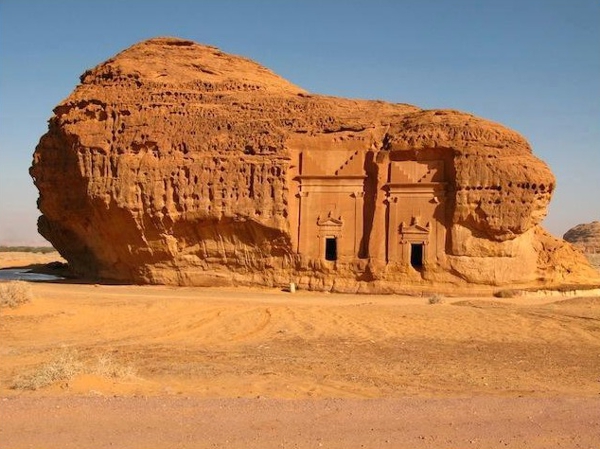
Meda'in Saleh graves in Hegra
Hegra is not made out of a single projecting rock, like Hijr suggests, but it is made out of scattered rocks in the desert. And the tombs are widely spread. So this challenges the concept of this being a “city” that was destroyed by an earthquake. There is no evidence of an earthquake there or a great city.
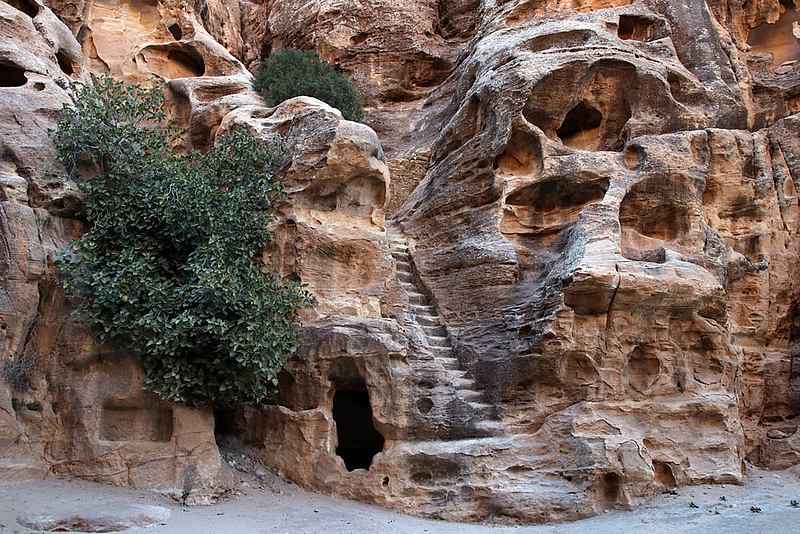
Carved houses near Petra
Now there is another name that Petra was known by. In my search for the names of Petra, I have come across one writer who calls the city of Petra by name, the name is Mecca. His name is Thomas Artsruni. He is a contemporary of Al- Ṭabarī. (Brosset, M, 1894) He is writing to us around the time of his death, and he is very clearly about the prophet Muhammad. After describing some of his activities he is very clear mentioning Mecca, and it is in Arabia of the Two Petras, And he emphasizes that he is talking about “The Mecca” The one where the prophet Muhammad revealed himself. Listen:
At that time, in a place called Arabia, Petrea Arabia Pharan, named Makka - The Mecca - he showed himself to his rothers … (Brosset, (1894)
And so he reveled himself there, In the area of the Two Petras, not in Mecca in Saudi Arabia, but in Mecca in Jordan, in the area of Faran or Paran. So we will do a separate video on Paran later, that’s what I plan to do. But notice there are two Rocks, Two Petras, and they are identified in this article and Mecca is identified as being there. So it is the city of Mecca. Now that helps us. The city of Petra also has the same name: Mecca, That explains why the name Mecca is used in all of the Islamic records. And it is not a mistake. It is a real name.
And here we have an outside source who tells us that Mecca is the city of Petra in southern Jordan.
So when Islamic accounts speak of Mecca, they are referring to both Petra in Jordan and to Saudi Arabia. How can we tell the difference? Well, that depends on the year that is being referred to. And, so we have to think carefully.
- Mecca referred to before 65 AH would most likely be Petra in Jordan However as time went on,
- Mecca referred to after 65 AH (65 AH was when it was moved, the Black Rock was moved down to Mecca in Saudi Arabia) and so it could refer to that or it could refer to Petra.
- But after 128 Hijiri, that’s when the great earthquake destroyed the city of Petra and from then on, after 128 all references to Mecca are talking about Mecca in Saudi Arabia. So the Islamic records are not wrong when they mention Mecca, because there were two Meccas, the original one in Petra, the second one in Saudi Arabia.
And so when the Islamic records talk about the Mother of All Settlements, Un Qura, they are not wrong, because there were two such cities, and they are talking about the city of Petra.
The key to knowing what we are talking is when the Ka’ba was moved from Petra to Mecca in Saudi Arabia. And the name Mecca was applied to both cities.
Is Petra mentioned in the Qur’an? I think it is.
While the actual word Petra isn’t used in the Qur’an. The Qur’an uses terms like Becca, mother of all cities, and even Mecca all refer to the city of Petra in Jordan.
If you want more information there is a paper written about this. You can download this paper from the website. It is called: Petra in the Qur’an.
And the site is on the screen. Go there, Have a look at all the different papers in the download section.
I am Dan Gibson, and this has been another video in the series of: Archeology and Islam.
Bibliography
Brosset, M., (translator) Collection D’Historiens Armeniens, L’Academie Imperiale Des Sciences, S. Petersbourg, 1894 (Includes the work of Artsruni) Gibson, Dan, Early Islamic Qiblas, Independent Scholars Press, 2017
Gibson, Dan, Nabataeans, Builders of Petra, Xlilbris, 2003
Gibson, Qur’anic Geography, Independent Scholars Press, 2011
Mas’ūdī, Abū Ḥasan, Les Prairies D’or, Vol 5, (The Meadows of Gold and Mines of Gems), Paris, pg. 192-3, 1869
Moran, William L., The Amarna Letters, The Johns Hopkins University Press, 1992
Pliny the Elder, (Natural History, Pliny, Book 6:32) Pliney the Elder, *Natural Histor*y, John Bostock, M.D., F.R.S., H.T. Riley, Esq., B.A., Ed., Retrieved from: http://www.perseus.tufts.edu/hopper, June 2018
Shaddel, Mehdy, Studia Onomastica Coranica: al-Raqīm, Caput Nabataeaem, Journal of Semitic Studies, 2017
Al- Ṭabarī , Ḥajjāj b. Yūsuf , The History of Al-Tabari, various volumes and translators, State University of New York Press
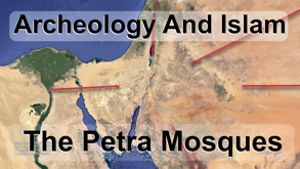
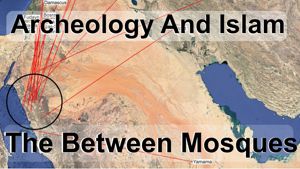

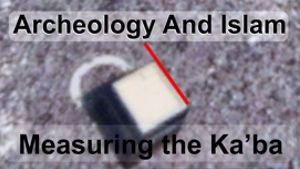
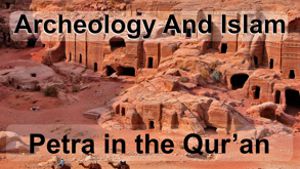
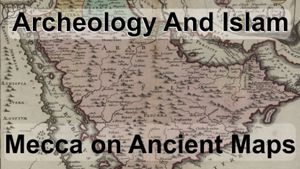
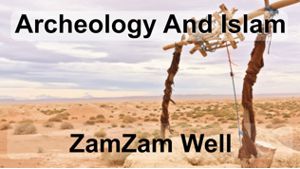
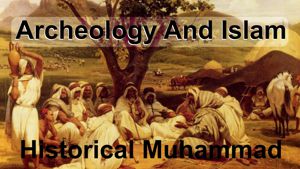
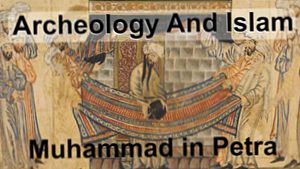
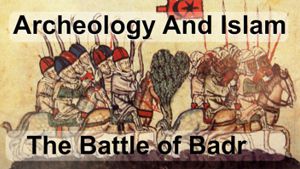

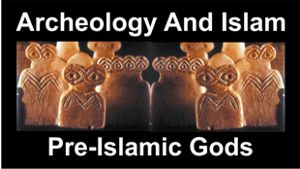


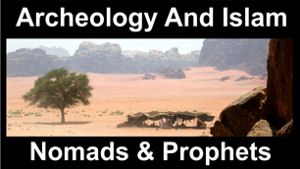

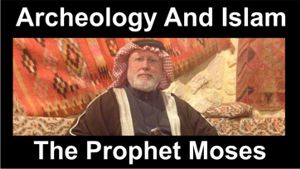
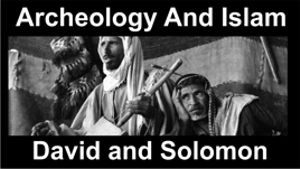

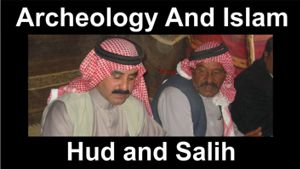
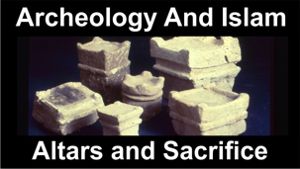
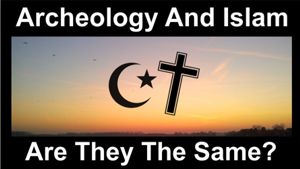
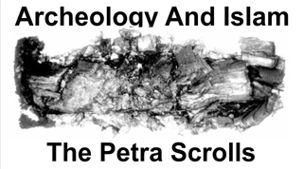
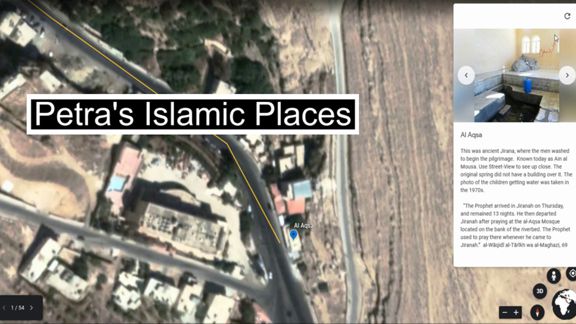

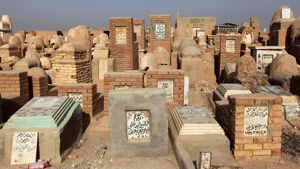
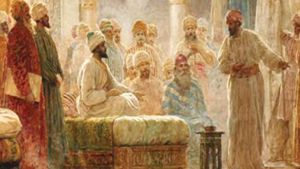
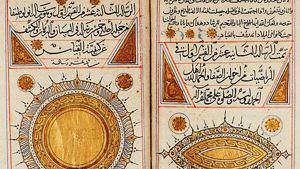
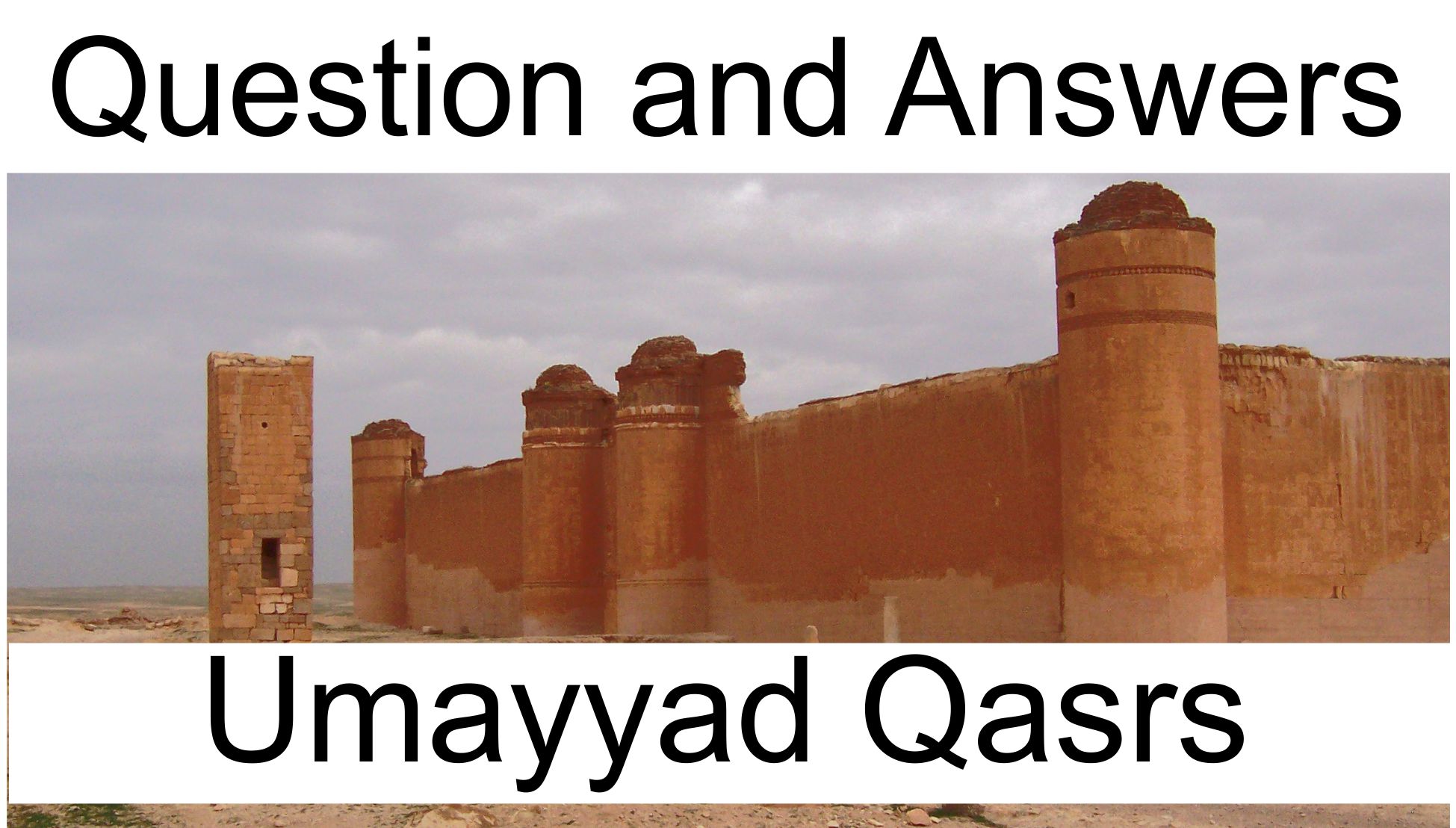
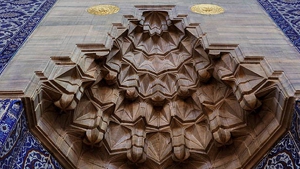
Page Discussion
Membership is required to comment. Membership is free of charge and available to everyone over the age of 16. Just click SignUp, or make a comment below. You will need a user name and a password. The system will automatically send a code to your email address. It should arrive in a few minutes. Enter the code, and you are finished.
Members who post adverts or use inappropriate language or make disrespectful comments will have their membership removed and be barred from the site. By becoming a member you agree to our Terms of Use and our Privacy, Cookies & Ad Policies. Remember that we will never, under any circumstances, sell or give your email address or private information to anyone unless required by law. Please keep your comments on topic. Thanks!